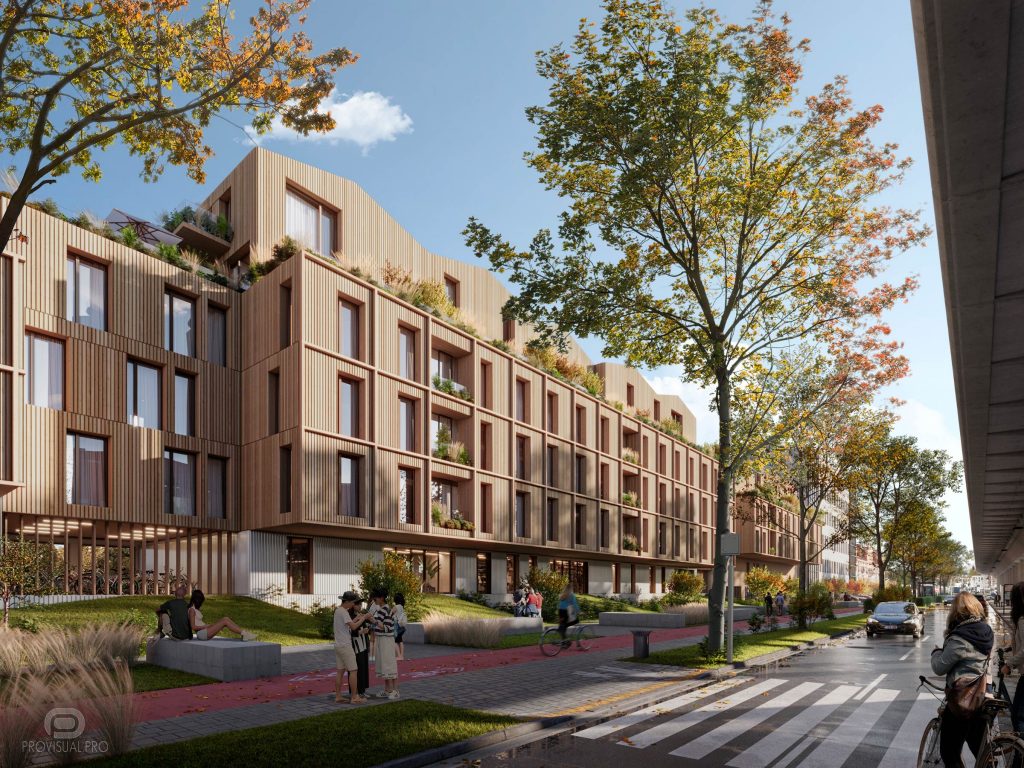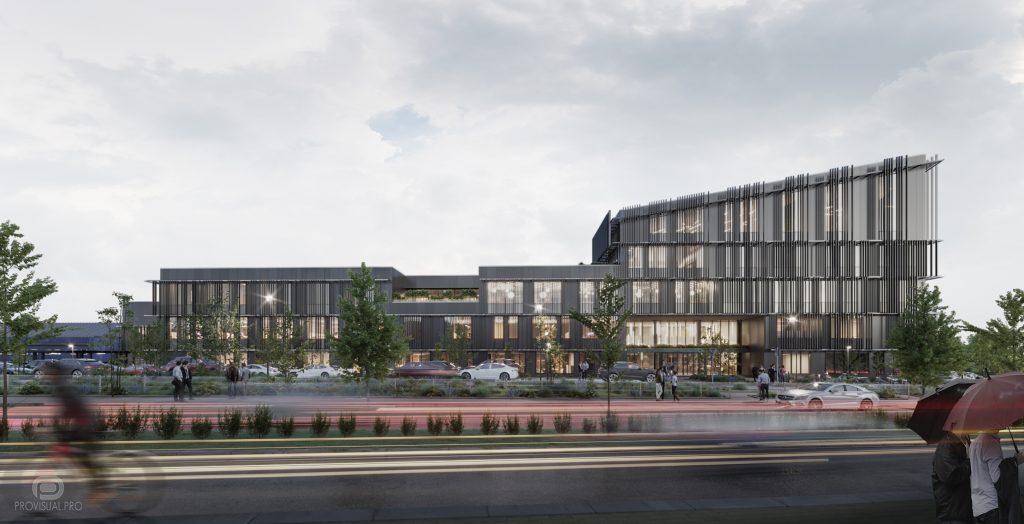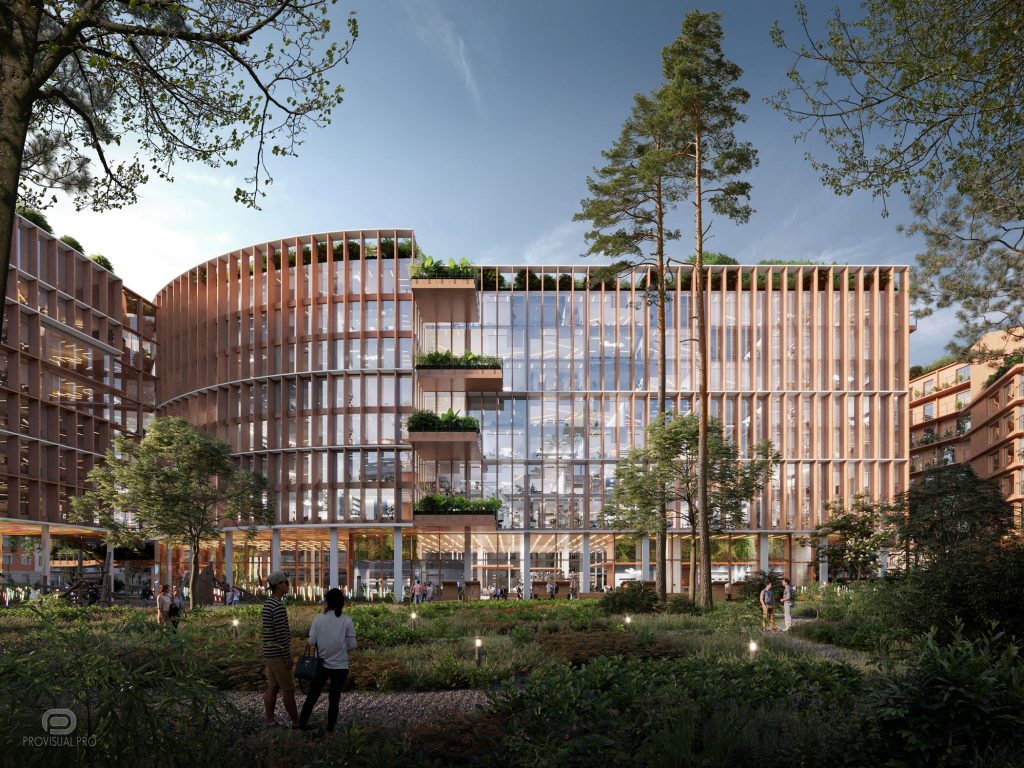Atmosphere and artistic elements of architectural 3D visualization
August 19, 2024
Architectural 3D visualization is the process of creating 3D images and animations that vividly depict future buildings, interiors, and other architectural projects. This tool has become an integral part of modern design and architecture, allowing architects, designers, and clients to visualize the final result even during the development stage. Visualization not only helps to showcase the physical appearance of a project but also allows exploration of various material, lighting, and composition options.
One of the key aspects of architectural 3D visualization is the creation of atmosphere, which significantly influences how the viewer perceives the project and sets the emotional tone of the entire work. Atmosphere is not just a background element; it is a powerful tool that affects the sense of space, mood, and connection with the environment. Through atmosphere, visualization can convey the warmth and coziness of a residential interior, the grandeur and majesty of a public building, or the coolness and tranquility of a garden landscape. A well-crafted atmosphere enables the viewer not just to see the project, but to feel it, making visualization an effective means of communication between architects and their clients.
1. Composition
Basics of composition in art
Composition is a fundamental element in art, including architectural 3D visualization. It determines how the elements of an image are arranged and interact with each other, creating a sense of unity and harmony. In 3D visualization, as in traditional art, it’s crucial to consider the placement of objects, their proportions, and their relationships. A well-composed image not only looks visually appealing but also conveys the core idea and concept of the project.
General principles of composition applicable to 3D visualization
Several universal principles of composition can be applied to create compelling 3D visualizations. These include symmetry and asymmetry, balance, proportion, and rhythm. These principles help structure a scene so that it feels natural and logical. For instance, symmetry can be used to create a sense of stability and order, while asymmetry can add dynamism and interest.
The rule of thirds, golden ratio, and other techniques
Some of the most well-known compositional techniques are the rule of thirds and the golden ratio. The rule of thirds involves dividing an image into nine equal parts using two horizontal and two vertical lines. Key elements of the scene are placed along these lines or at their intersections, helping to create a balanced and harmonious image. The golden ratio, on the other hand, uses a mathematical ratio of 1:1.618, which is often found in nature and is perceived as aesthetically pleasing. These techniques can be employed in 3D visualization to create visually appealing and well-balanced compositions.
Dynamic and static composition
An important aspect of composition is creating a sense of dynamism or stillness, depending on the mood or feeling you wish to convey. Dynamic composition is characterized by diagonal lines, tilted planes, and an active use of space, which creates a sense of movement and energy. Static composition, in contrast, is based on horizontal and vertical lines, symmetry, and central placement of elements, giving the scene a sense of calm and stability. In 3D visualization, this can be used to convey different emotional states and focal points.
Focal points and leading lines
Focal points and leading lines are powerful tools in composition that guide the viewer’s eye and create emphasis on certain elements of the scene. A focal point is the key element of the image that draws the viewer’s attention. In 3D visualization, this could be a prominent architectural feature, an interesting interior detail, or a source of light. Leading lines, such as pathways, rivers, or lines of perspective, help direct the viewer’s gaze toward the focal point, creating a sense of depth and perspective. Proper use of focal points and leading lines allows you to create a composition that not only attracts attention but also holds it, guiding the viewer through the visual journey intended by the designer.
2. Lighting
The role of lighting in creating atmosphere
Lighting plays a crucial role in setting the atmosphere within 3D visualization. It not only influences how objects and spaces are perceived but also significantly affects the mood and emotional impact of the scene. Proper lighting can evoke feelings of warmth, intimacy, or grandeur, making it an essential tool for conveying the desired tone of a project. Through strategic use of light, shadows, and highlights, designers can guide the viewer’s emotions and focus, creating a specific experience that resonates with the intended message of the visualization.
Types of lighting
Lighting in 3D visualization can be categorized into several types, each with its unique impact on the scene:
- Natural lighting. This includes sunlight and moonlight, which provide a realistic and organic feel to the scene. Natural lighting is often used to simulate different times of day, affecting shadows, color, and overall mood.
- Artificial lighting. This type includes man-made sources like lamps, chandeliers, or streetlights. Artificial lighting allows for greater control over the scene, enabling designers to highlight specific areas or create specific atmospheres regardless of time of day.
- Local lighting. Local lighting focuses on specific elements or areas within the scene, such as a spotlight on a particular object or a lamp illuminating a corner of a room. It adds depth and emphasis to the visualization.
- Ambient lighting. Ambient or general lighting provides overall illumination, ensuring that the entire scene is visible. It sets the base level of light, with additional lighting used to create contrast and focus.
Color temperature of light
The color temperature of light, measured in Kelvin, significantly influences the atmosphere of a scene. Warm light (lower Kelvin) with a yellow or orange hue creates a cozy, inviting environment, often used in residential interiors or evening scenes. Cool light (higher Kelvin) with blue or white tones can evoke a sense of cleanliness, modernity, or sterility, making it suitable for offices, hospitals, or futuristic designs. The choice of color temperature in 3D visualization helps in setting the desired mood and ensuring that the lighting aligns with the overall aesthetic of the project.
Shadows and contrast
Shadows and contrast are vital in adding depth and volume to a scene; shadows help to define the shape and position of objects within space, creating a more realistic and three-dimensional feel. High contrast between light and shadow can emphasize certain elements, creating drama or focus. Conversely, soft shadows and low contrast can create a more subtle and calming atmosphere. Properly balanced shadows and contrast enhance the overall realism of the scene and contribute to its visual impact.
3. Post-production
Why post-production is important
Post-production is a critical step in refining and enhancing 3D visualizations. It allows for adjustments in color, contrast, and other visual elements to achieve the desired aesthetic and emotional impact. Post-production also enables the addition of special effects, such as bloom, depth of field, or noise, which can further enhance the realism or artistic quality of the image. By refining the raw render, post-production ensures that the final visualization meets professional standards and effectively communicates the project’s vision.
Popular post-production software
Several software programs are commonly used for post-production in 3D visualization:
- Adobe photoshop. Widely used for its versatility, Photoshop offers a range of tools for color correction, retouching, and adding effects, making it a go-to choice for many professionals.
- Lightroom. Known for its powerful color grading and exposure adjustment capabilities, Lightroom is often used for fine-tuning images, especially in photography and architectural visualization.
- Other software. Other popular programs include Affinity Photo, GIMP, and Nik Collection, each offering unique features and tools for enhancing 3D visualizations.
Key post-production tools
Post-production involves various tools to fine-tune the image:
- Exposure correction. Adjusting the brightness to ensure the image is properly lit and that details are visible in both highlights and shadows.
- Contrast adjustment. Enhancing the difference between light and dark areas to make the image more dynamic and visually engaging.
- Color correction. Balancing the colors to ensure they are true to life or match the desired artistic intent, including adjusting white balance and saturation.
- Adding noise and vignetting. Introducing slight grain (noise) or darkening the corners (vignetting) can add a cinematic feel and focus attention on the center of the image.
4. Creating atmosphere in different styles
Classical style
The classical style is characterized by restraint, symmetry, and the use of natural materials like stone, wood, and marble. In 3D visualization, creating a classical atmosphere involves careful attention to detail, with a focus on balance and proportion. Lighting plays a key role in highlighting the elegance of the materials and the precision of the design. Soft, warm lighting can enhance the richness of natural materials, while symmetrical compositions emphasize the style’s inherent order and harmony. The overall atmosphere should evoke a sense of timelessness and refinement.
Modern style
Modern style is defined by minimalism, clean lines, and a strong contrast in colors. In 3D visualization, this style is often achieved through the use of neutral color palettes with bold accents, sleek materials like glass and steel, and an emphasis on open space. Lighting is typically bright and direct, often using cool tones to emphasize the crispness and clarity of the design. The atmosphere in a modern visualization should convey simplicity, functionality, and a forward-looking aesthetic, often with an emphasis on innovation and sophistication.
Loft style
Loft style is known for its raw, industrial feel, characterized by exposed brick walls, open ductwork, and industrial elements like metal and concrete. In 3D visualization, creating a loft atmosphere involves a mix of rough textures and open spaces, with a focus on authenticity and urban chic. Lighting often includes a combination of natural light from large windows and industrial-style fixtures like pendant lamps. The use of shadows and contrast can add depth, while a subdued color palette with occasional pops of color can highlight the unique features of the space. The atmosphere should evoke a sense of rugged, yet stylish, urban living.
Scandinavian style
Scandinavian style is marked by light tones, natural materials, and simplicity. In 3D visualization, this style is achieved through the use of a soft, neutral color palette, with an emphasis on white and light woods, creating a bright and airy atmosphere. Natural light is a key element, often maximized with large windows and reflective surfaces. The atmosphere should feel calm, inviting, and connected to nature, with a focus on functionality and comfort. Simple, yet elegant, furnishings and decor elements contribute to the overall sense of warmth and coziness that defines Scandinavian interiors.
Conclusion
The atmosphere in 3D visualization is crucial for project success, as it enhances design appeal and effectively conveys the intended mood and function, increasing the likelihood of approval. Emerging trends like real-time rendering, virtual and augmented reality, and AI advancements are pushing the boundaries of visualization, making it more immersive and realistic. For aspiring visualizers, it’s essential to master composition, lighting, and color theory, study real-world references, experiment with different styles, and continuously practice to develop impactful and atmospheric visualizations.


